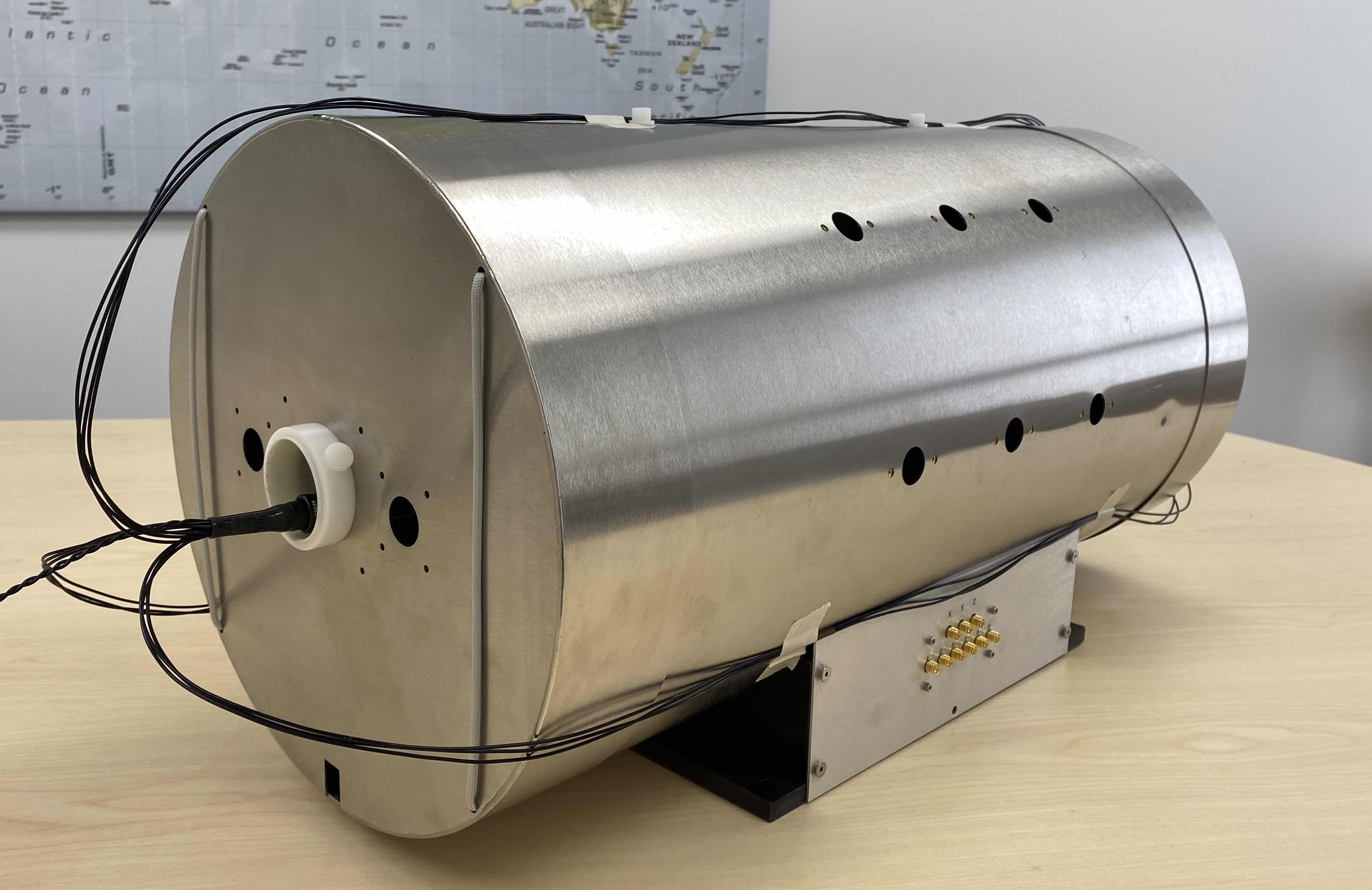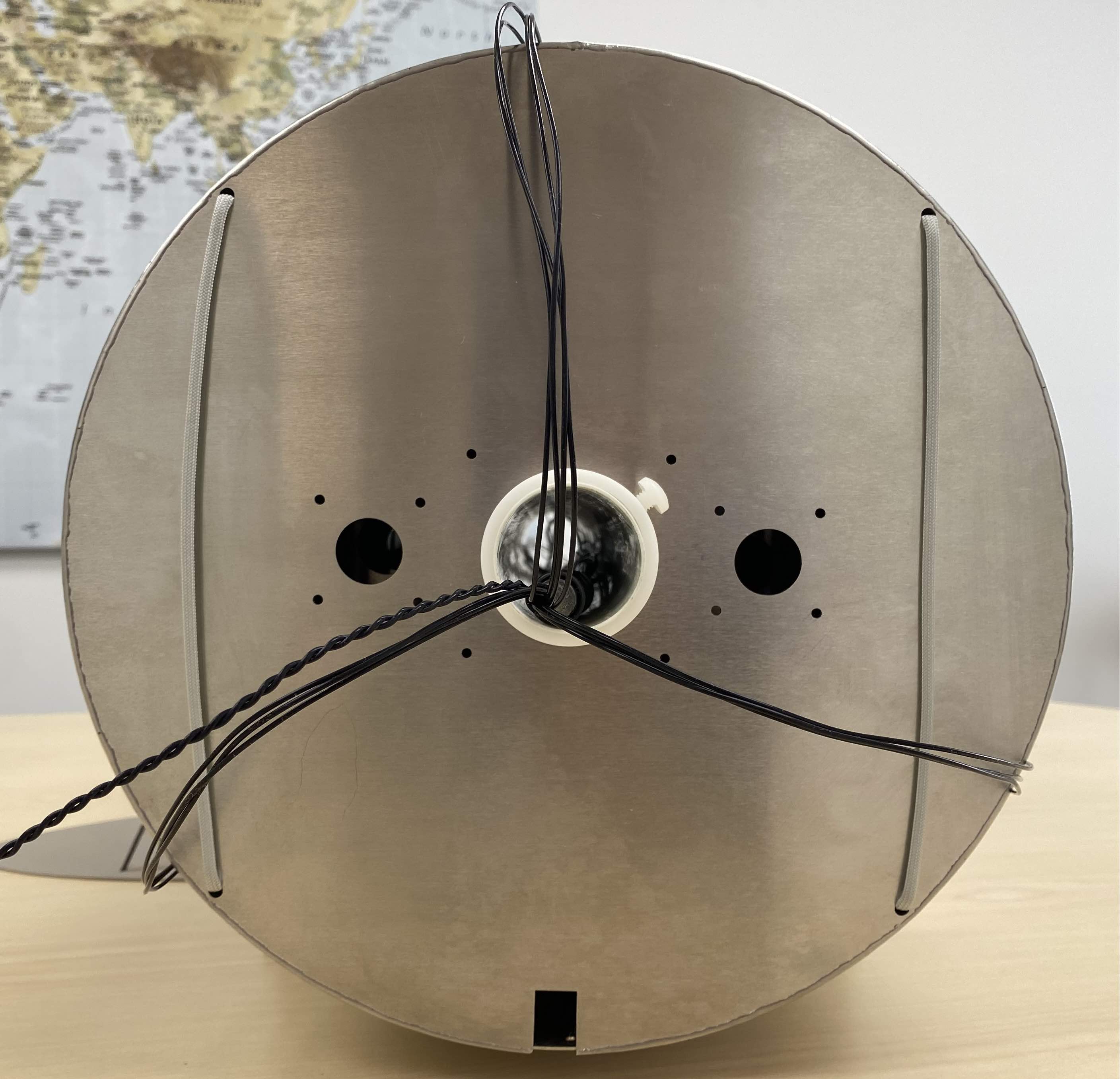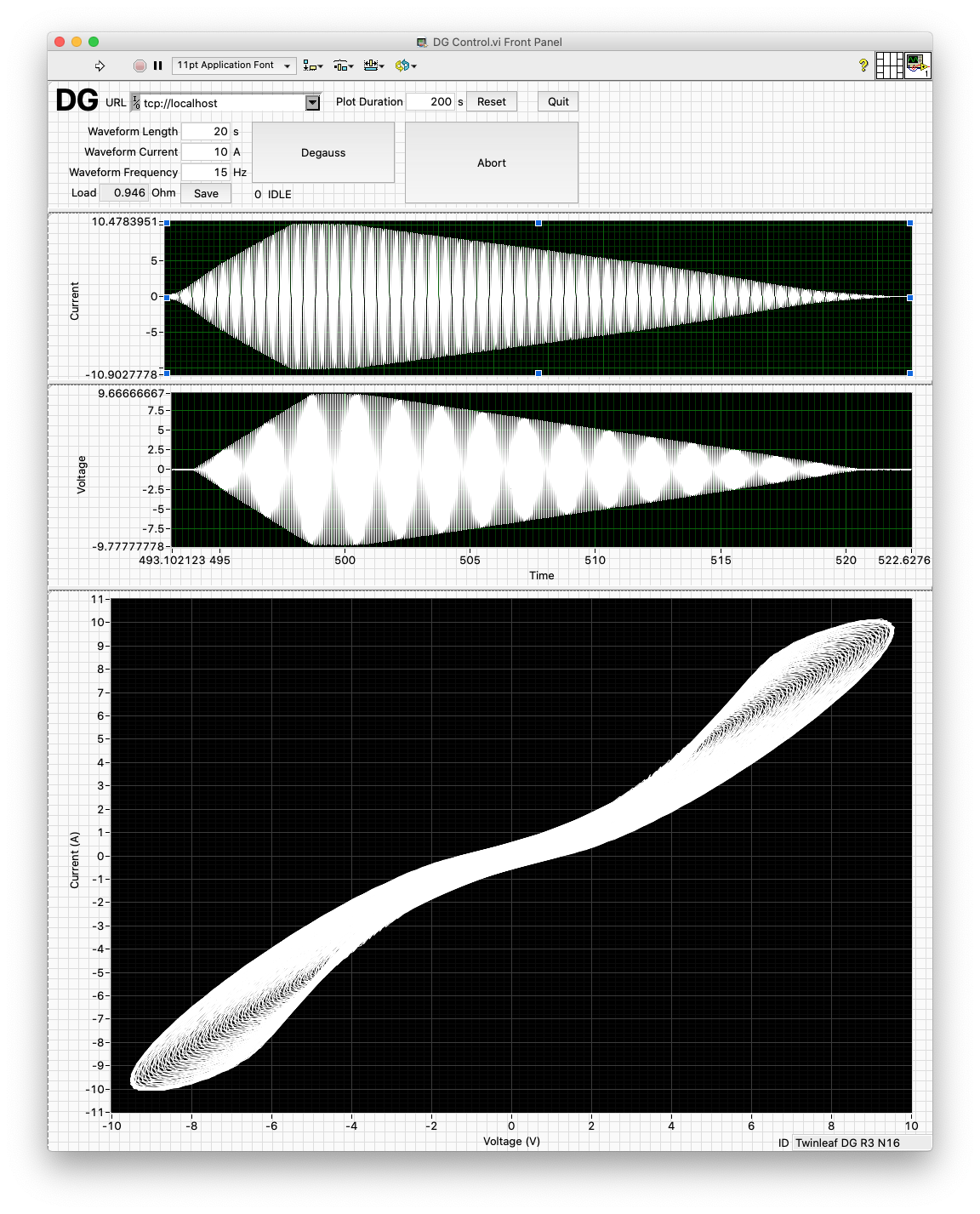Degaussing Magnetic Shields
Magnetic shields are made of multiple shells of ferromagnetic materials that suppress external magnetic fields from reaching an enclosed volume. When a magnetic shield is opened by removing the end caps, the ~50 µT Earth magnetic field can slightly magnetize the inner shielding layers, resulting in a 10–100 nT remanent field after it is reassembled.
In some applications it is necessary to reduce the magnetic field as close as possible to a zero. Zeroing the internal magnetic field can be accomplished by combination of degaussing and applying compensation fields using a internal magnetic field coils and a precision current source. Degaussing is important because it suppresses gradient fields imposed by inhomogenously magntetized materials.
Demagnetizing or degaussing a magnetic material is possible by applying a strong oscillating magnetic field that drives the material into magnetic saturation at the maximum and minimum points of the oscillation and then slowly and smoothly decreasing the amplitude of the oscillation down to zero. To thoroughly erase any existing magnetization it is necessary to ensure that the oscillating field is thoroughly saturated, overwhelmingly magnetizing the material.
The topology of the degaussing coil is critical to ensure a saturation field is imposed throughout the magnetic material. The coil must penetrate the shield to direct flux through all layers of the shield material. Furthermore, the coils should be azimuthally distributed in order to ensure that the flux is evenly distributed around the shield. The ideal coil geometry is a toroidal coil winding around the shield; however, it is fine to route the conductors in a single bundle hugging the inside wall to avoid other apparatus inside the shield.
Setup


With the shield fully assembled, thread the degaussing cable through the center of the shield and mate the connector. The windings should be distributed in at least three groups around the outside of the shield as shown.
Procedure
The Twinleaf DG unit can be be controlled and configured using LabVIEW, Python, or other programming environments using its open protocol. We recommend the Labview interface to see a live graphical representation of the voltage and current applied to the degaussing coil and to easily observe the saturation point.
Start by connecting the following elements:
-
Install and connect the degaussing coil in the shield
-
Connect the coil to the DG unit with the banana plugs. Polarity does not matter.
-
Connect the DG unit to 120-240V power mains.
-
Connect the DG unit to a host computer via USB or serial.
The degaussing sequence is started by the red button on the unit or via the programming interface.
There are two main parameters for degaussing:
-
Waveform duration: 100-300 seconds; longer is better.
-
Waveform amplitude: 0-10 A; set high enough to ensure saturation.
Begin with a low 1 A amplitude. Repeatedly run the degaussing process and increase the amplitude in 1 A increments. Saturation is indicated when current flowing in the coil sharply increases above a applied voltage threshold.
Notes
-
DG should remember modifications to its setting across power cycles. Once operating parameters are established, it is possible to connect everything and simply press the red button to repeat the same degaussing procedure.
-
It is not necessary to physically unplug the degaussing coil when degaussing is complete. Relays inside the DG unit disconnect the coil there to prevent coupling noise into the shield.
